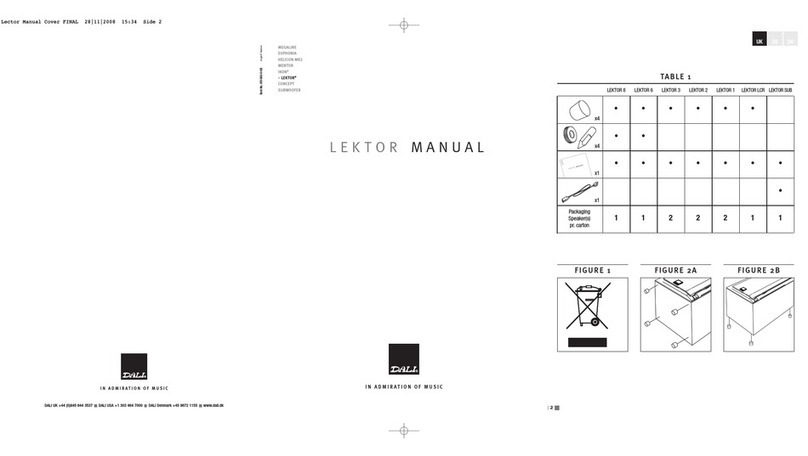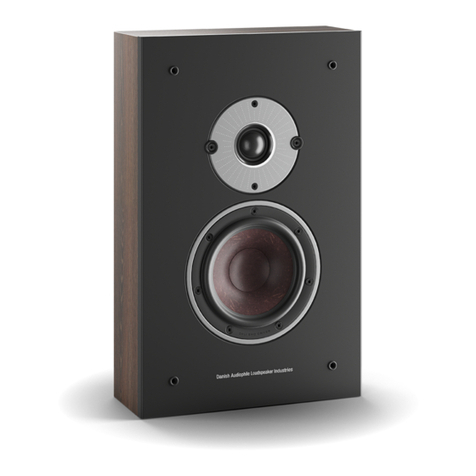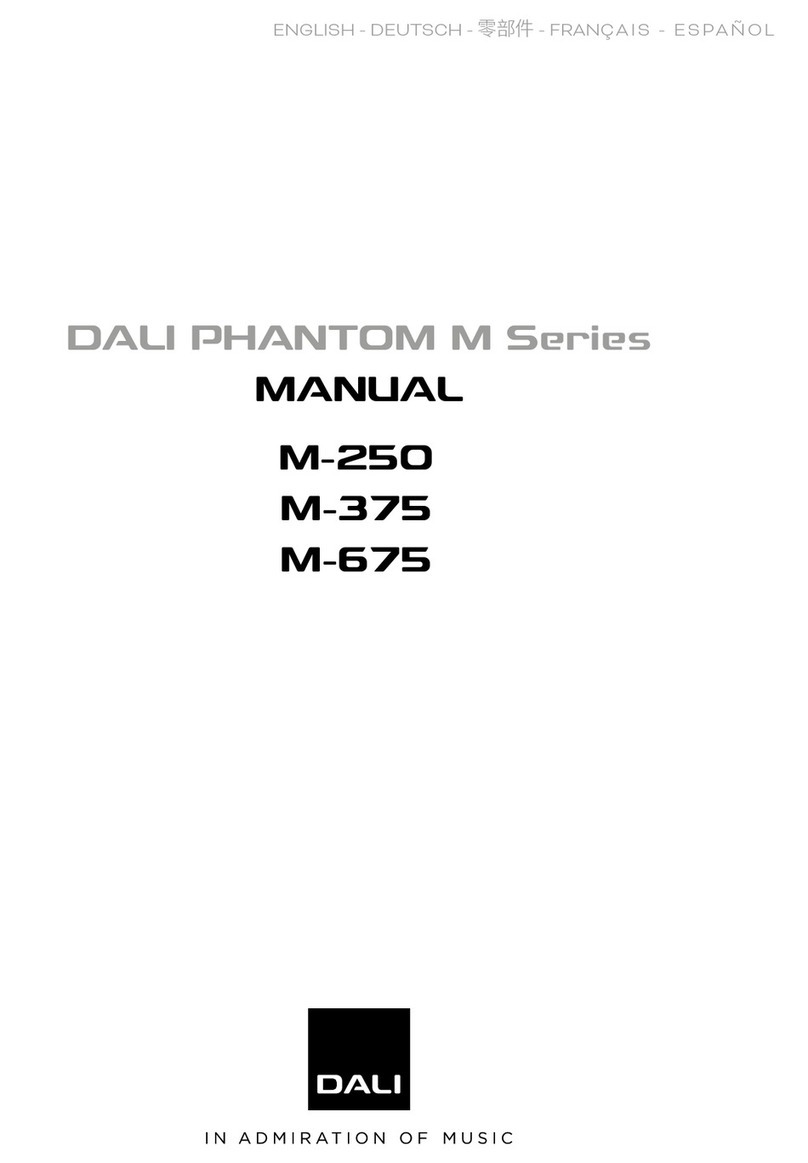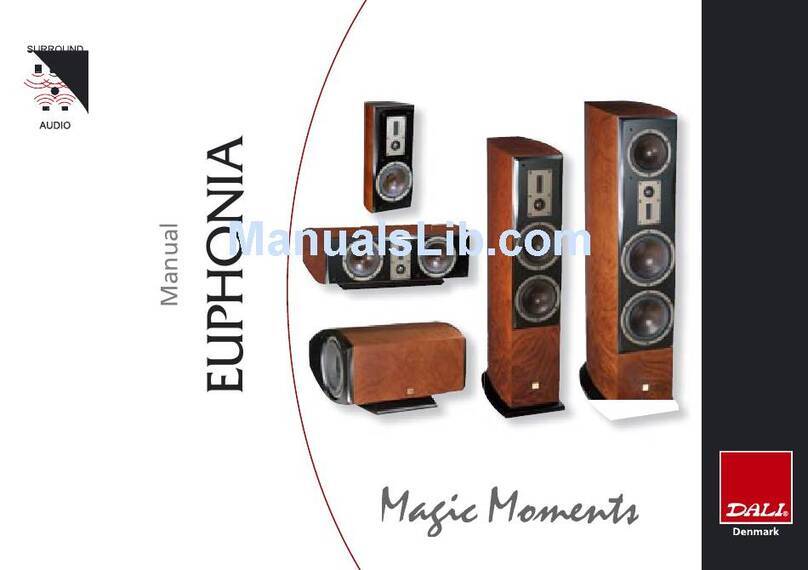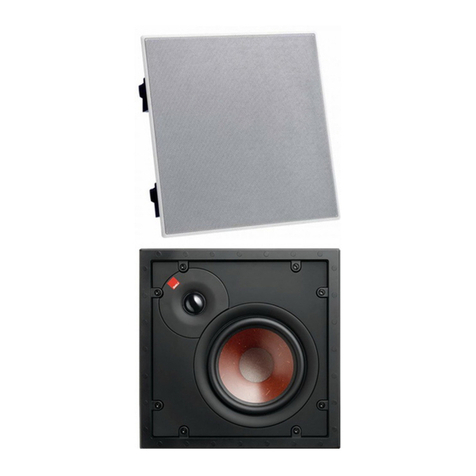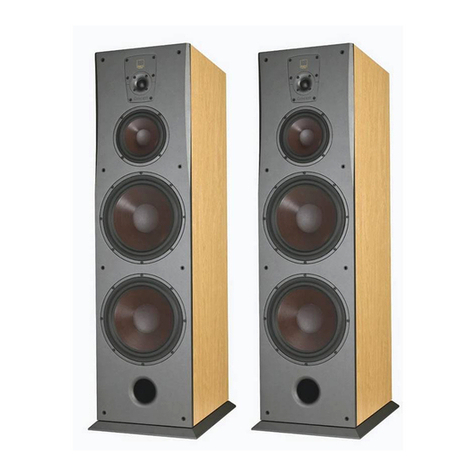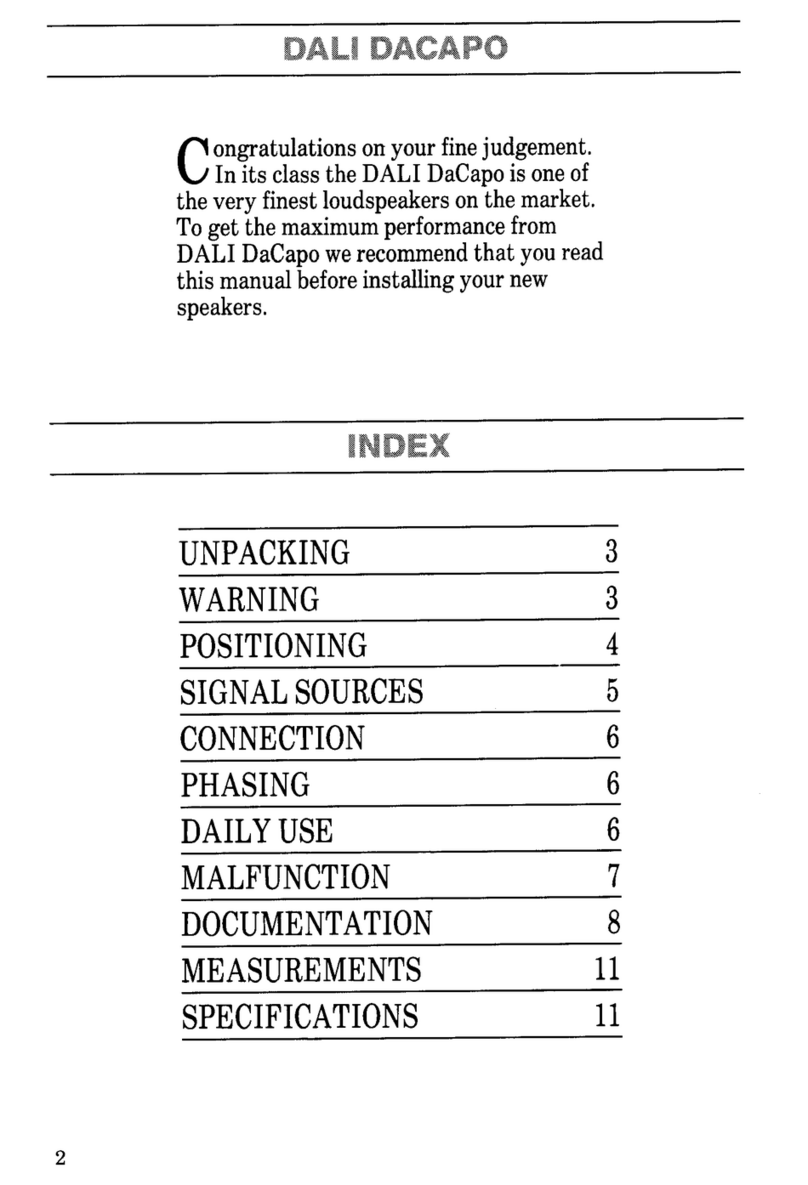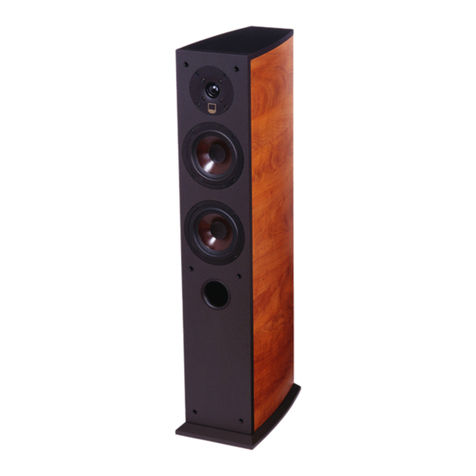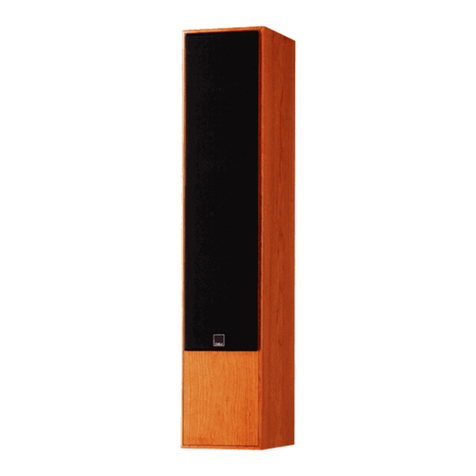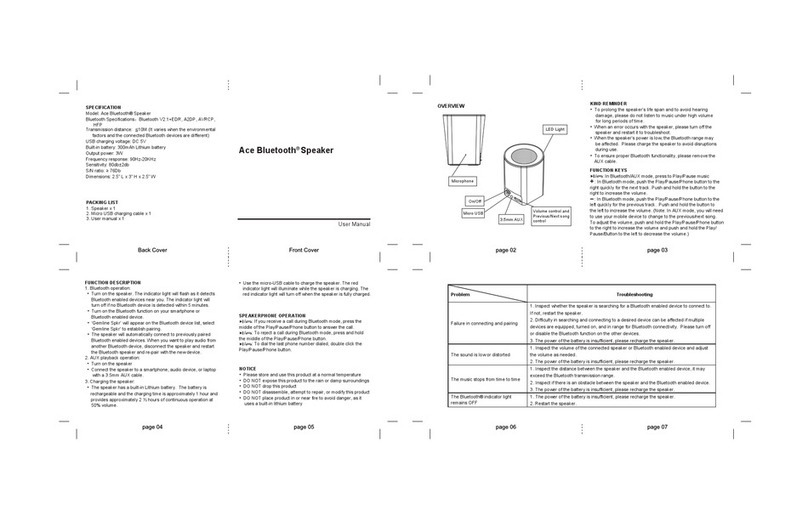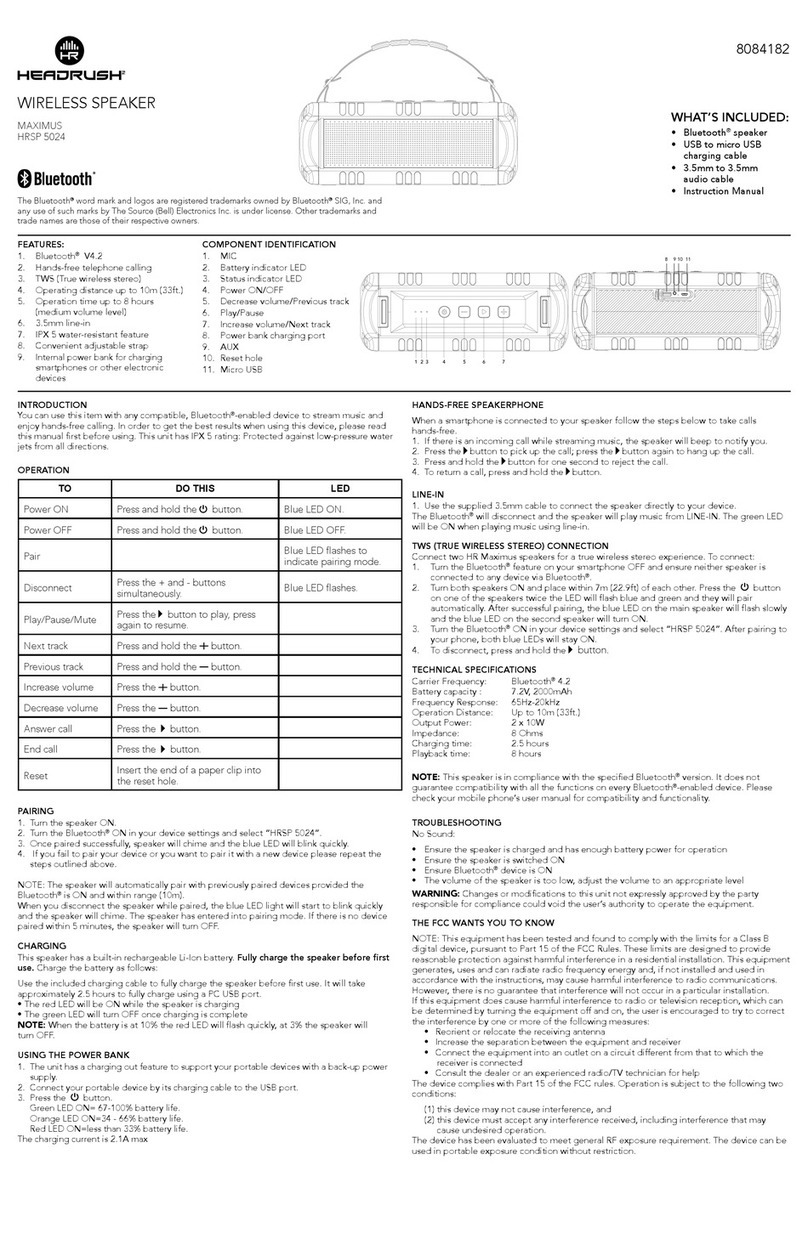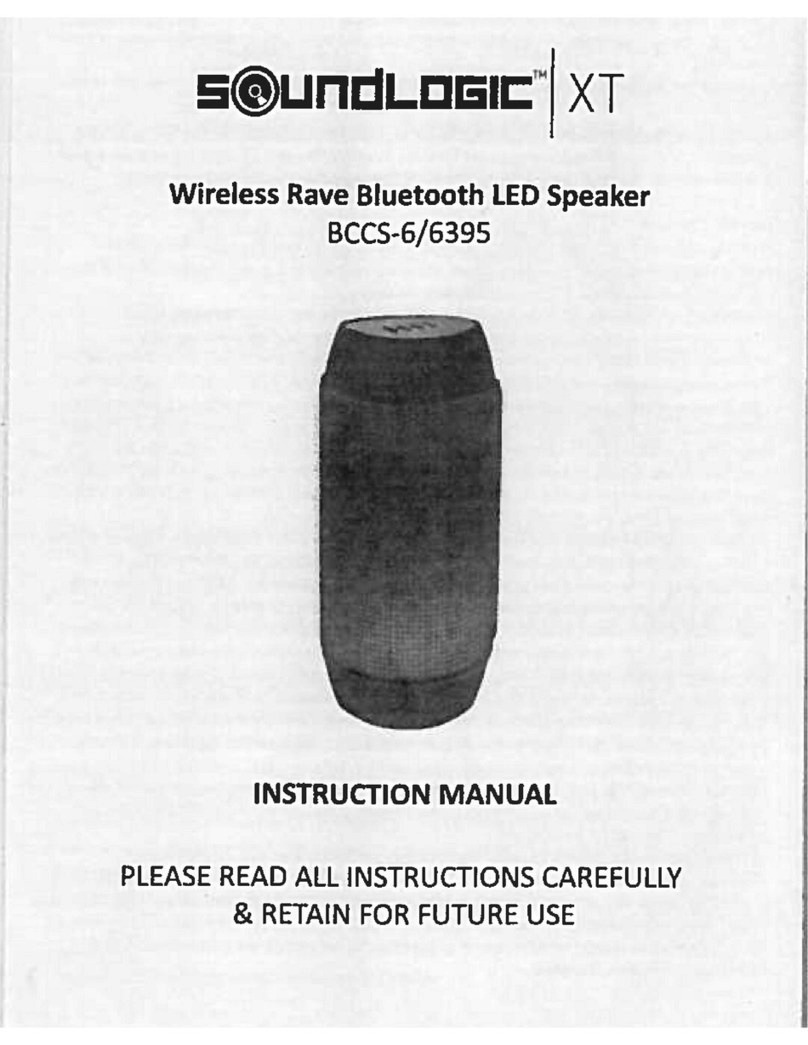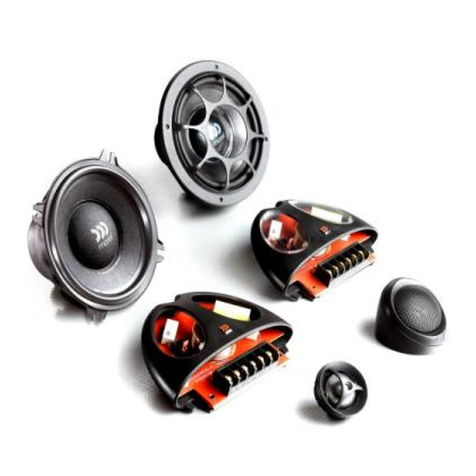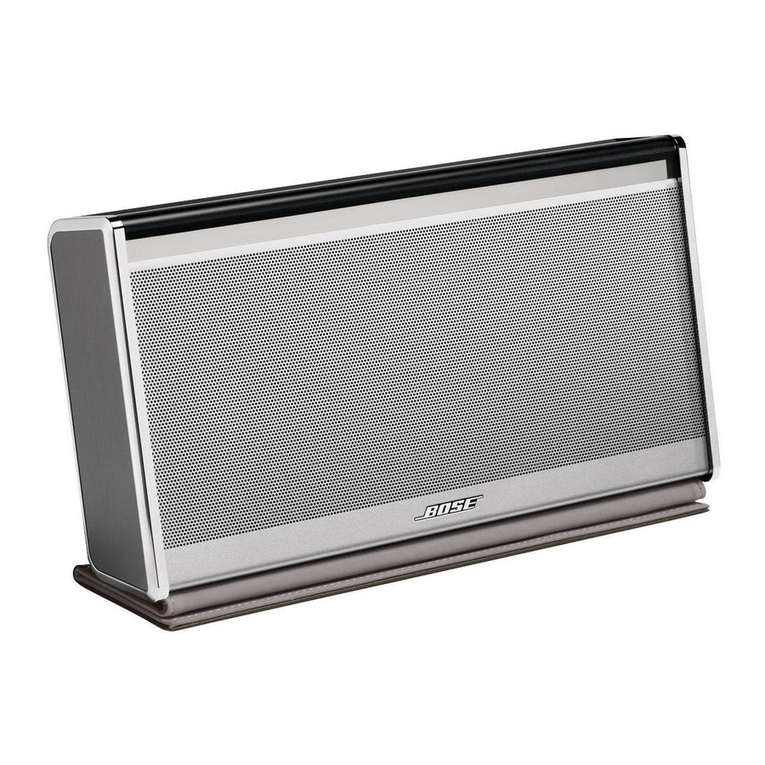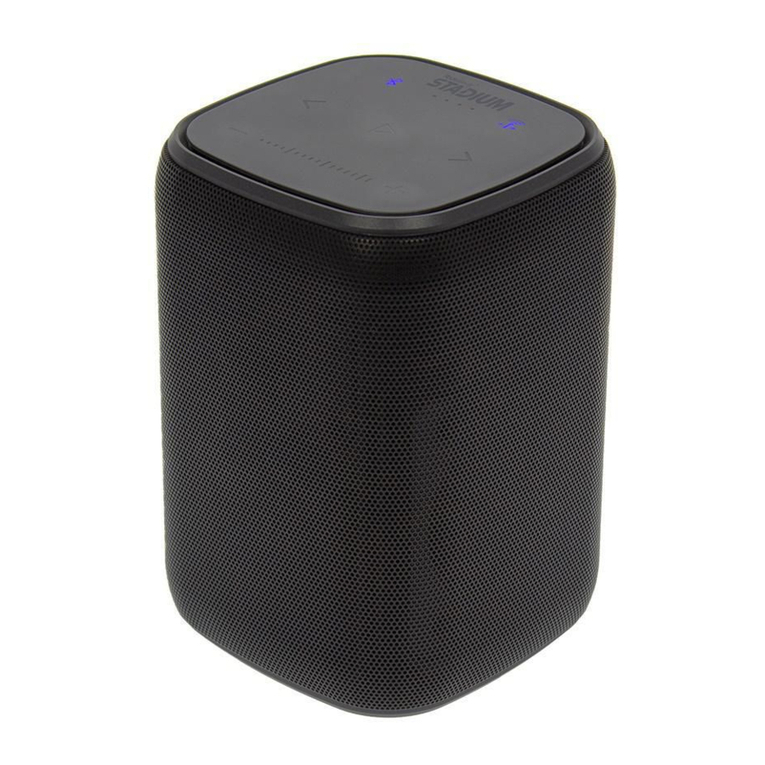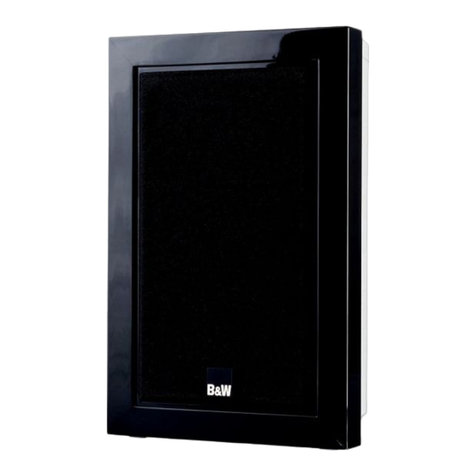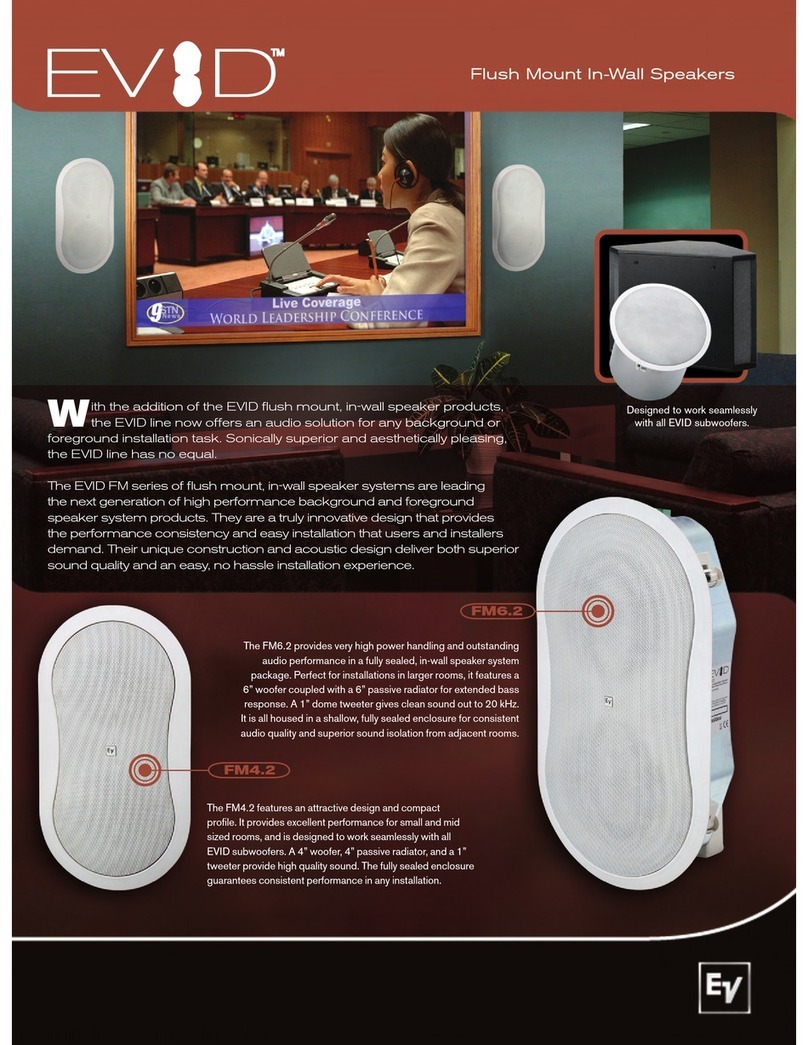Remember that the tone controller is only intended for minor adjustments.
9
English
Power and acoustic pressure
How loud a speaker is able to play and still sound good is completely
dependent on the signal it has to reproduce. So, in practice, you cannot
dene an unequivocal level for use in comparing different speakers.
Obviously, lots of pure, undistorted output from a large amplier is better
than a distorted signal from a small amplier stretched beyond its capac-
ity. The signal from a distorting (clipping) amplier contains much more
high-frequency information than an undistorted signal, and therefore puts
a heavy strain on the treble unit. Consequently, speakers are most often
damaged by small ampliers having to work too hard - and very rarely by
large ampliers, which are practically running idle.
It is worth noting that when the tone controls are turned above the neu-
tral setting this signicantly burdens both speakers and amplier. On a
good sound system tone controls should only be used to compensate for
poor recordings and not to permanently compensate for weaknesses else-
where in the system. So, DALI recommends that the tone controls generally
be set to the neutral position, and you achieve your desired sound image
through correct positioning of the speakers.
As a general guide, avoid large, hard reective surfaces immediately
around the speakers, as these will act like an eccho effect and weaken the
spatial perspective of the sound image. Try placing a tapestry behind the
speakers, laying a rug in front or placing a large plant at the side - it's sur-
prising how much this can affect the precision of the sound image.
Once you are happy with the positioning of your speakers, it is important
to ensure that they are completely stable. Use the accompanying rubber
feet when standing Elegance on another unit, shelf etc.

